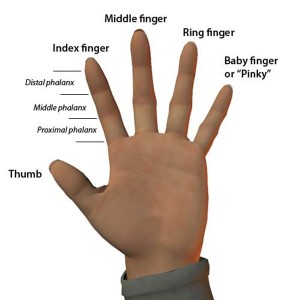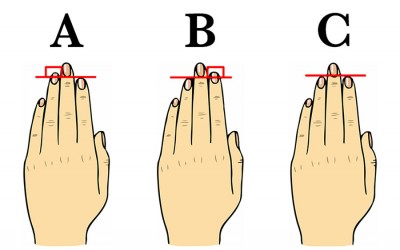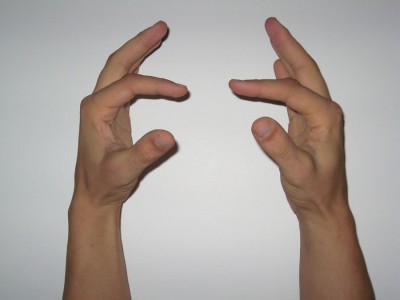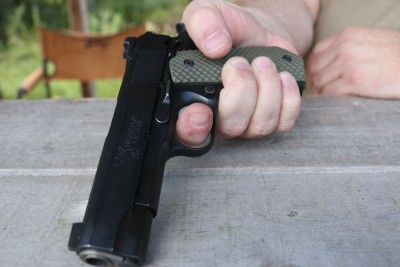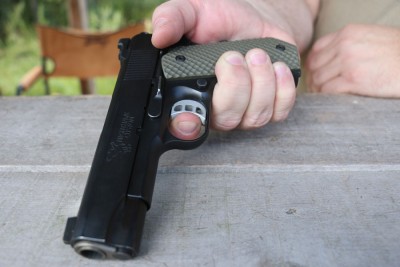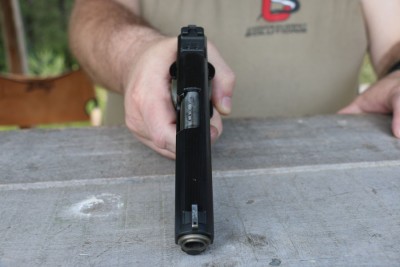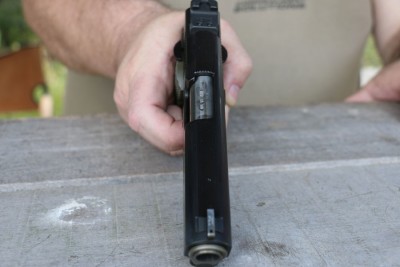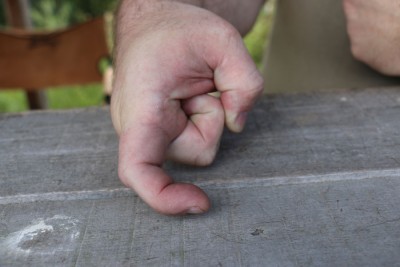Buy a 1911 on GunsAmerica: https://www.gunsamerica.com/Search.aspx?T=1911
If I were to choose the most critical component of accurate shooting, regardless of whether you’re shooting fast or slow, it would be trigger control. Everything else we practice–stance, grip and other body mechanics–ultimately serves one purpose: to keep the gun steady and avoid disturbing the sights while depressing the trigger.
Let’s get to the core of the issue, which is the fact that the trigger in a handgun requires more force to depress than the loaded gun weighs. This means that the gun will move before the trigger does, unless action is taken to prevent that movement. Now that we have identified the problem, let’s look at some tools that can help.
“Where on the finger” depends on your finger
There are three positions on the finger that can be placed at the center of the trigger.
- The tip of the pad
- The middle of the pad
- The first distal joint.
There are as many different hand and finger sizes and shapes as there are handguns. One size does not fit all. Heck, one size probably won’t work well for most, but we learn to make do with what we have. We can learn to make almost anything work, given enough effort. There are many reasons to practice proper finger placement, and I will try to cover most of them below.
[one_half]
[/one_half][one_half_last]
[/one_half_last]
Straight back vs pivoting
[full_width]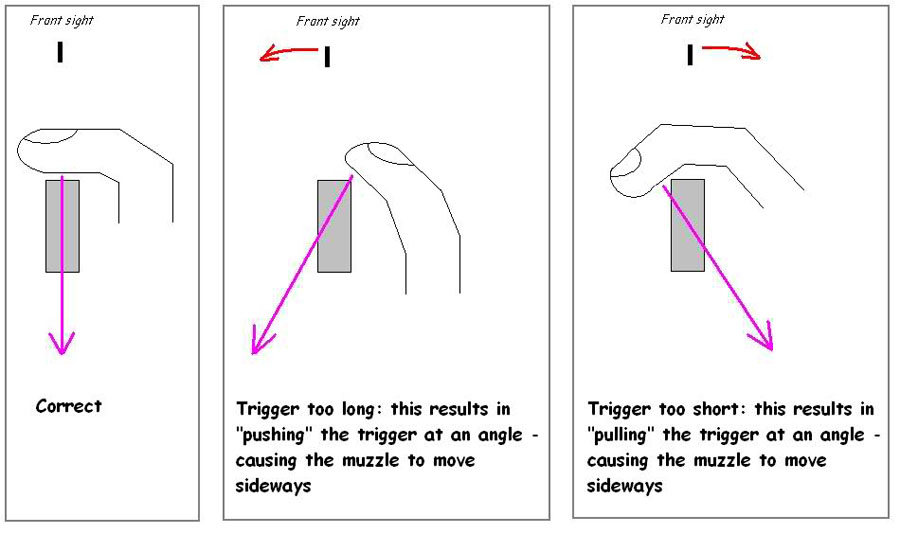 [/full_width][one_half]
[/full_width][one_half]
You should use the movement of the second distal joint to depress the trigger, as this results in a straight back motion. The opposite of this is to use the proximal phalanx, which pulls the trigger with a hooking motion. Too much finger in the trigger guard will result in this hooking, which pushes the barrel low and to the left. This will also cause additional gun movement when the tendons in between the proximal phalanx and Middle phalanx contract and bulge. [/one_half][one_half_last]
[/one_half_last]
Smooth vs “feel everything”
My whole life I have been taught the mantra “smooth, steady trigger.” I can tell you from experience that most triggers are not smooth. They have take-up and rough spots, and the pressure builds as the trigger moves to the rear. My only recourse is to embrace these flaws and continue to apply pressure. I want to feel all of these catches and clicks; it’s like feeling the road under a great sports car. If you don’t feel these imperfections, you are using too much force on the trigger.
[one_half]
[/one_half][one_half_last]
[/one_half_last]
Least amount of pressure possible
I know that a GLOCK out of the box has a 6.5 pound trigger (measured at the foot). When firing one, my goal is to use only 6.6 pounds of pressure. Using less force increases your chances for quick and accurate shots. The dominant index finger on most males is capable of applying well over 20 pounds of pressure. I have seen triggers damaged from too much pressure.
[one_half]
[/one_half][one_half_last]
[/one_half_last]
Light is Fast
When I want to shoot fast, I know that my natural tendency is to use too much force. This results in what has been called “trigger freeze.” Trigger freeze is a condition in which the shot is fired, and you think you have allowed the trigger to reset, but when you depress the trigger again the gun does not fire. When such excessive force is used, and the index finger compresses against the trigger, a sensation of movement is caused when the finger decompresses, although the trigger itself has not moved far enough to reset.
Reset
Trigger Reset is a term used to describe the distance the trigger moves back toward its “at rest” position before it re-engages the internal linkages (sear, etc.) that allow the gun to be fired again
In class, I will have students fire a shot and hold the trigger all the way to the rear afterwards. Then I have them slowly release the trigger until they hear the “click” and feel it in their trigger fingers. When that happens, the sear has reset, and another shot can be fired by pulling the trigger to the rear again.
[one_half]
[/one_half][one_half_last]
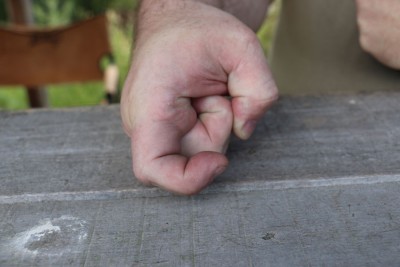
This is an excellent “at home” drill that will help to emphasize the fundamentals. Bring it straight back–no hook!
[/one_half_last]
Final Thoughts
I would recommend that you try each of these methods; your results may vary. I would also encourage you to try practicing the Weaver, Chapman and Isosceles stances. Your finger placement on the trigger will depend largely on which gun you are shooting. When I shoot a double action revolver, I almost always use the first distal joint. I will typically touch with the center of my pad when firing a GLOCK, while a good 1911 will get the tip of the pad. As always, remember to take it slow and be safe!
